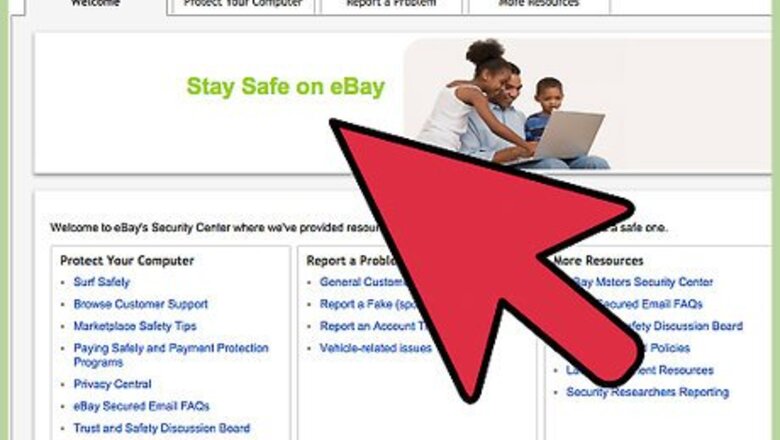
views
Reporting to eBay
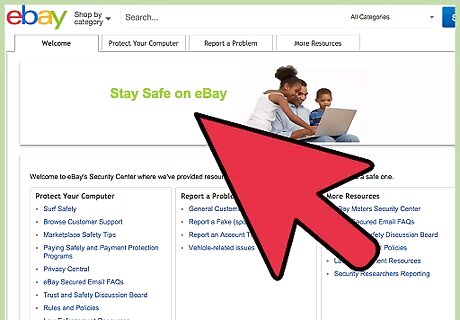
Review eBay's rules and policies. Before you report a listing as fraudulent, check eBay's rules to figure out how to best categorize the activity. The website has specific rules for buyers and sellers, as well as rules for everyone who uses eBay's site and services. Violation of some rules and policies can result in eBay suspending the user's account or even blocking the user's IP address. You also can find general information and tips for staying safe while using eBay by browsing the articles in eBay's Security Center at http://pages.ebay.com/securitycenter/.
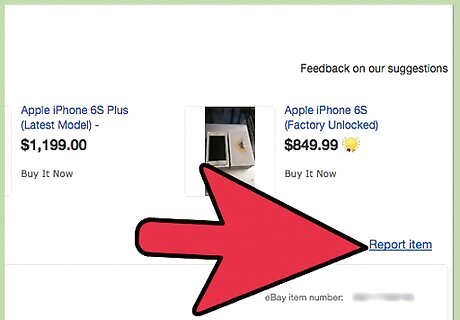
Report directly from the listing. If the listing itself is fraudulent and is still active on the site, you can click the link at the bottom of the page that reads "Report this listing." In some cases, the listing may already be closed, or the activity may not be related directly to the listing or the item sold. For example, one common fraud scheme involves contacting a losing bidder on an item and offering them a second chance to buy the same item at a reduced price. The scammer then has his victim send money through a wire service or money transfer company and doesn't follow through with delivery of the item. If you are a seller on eBay, you also may be the target of fraud on the part of a buyer. A scammer may contact you to purchase an item, offering to send you a check or money order for an amount greater than the sales price. They tell you that you can deposit the payment and send them a check or money order for the difference. Of course the check or money order you deposit is counterfeit, and the scammer has run off with the money and also potentially the item you intended to sell.

Gather information about the transaction. Keep copies of any correspondence with the buyer or seller, along with any information you can pull from the user information page. To report fraud to eBay, you generally need to have the user name as well as a reference number or any other information about the specific listing where the fraud has occurred. For example, if you've used the "contact member" system within eBay, you may have a name or email address for the person, or you may have exchanged emails.
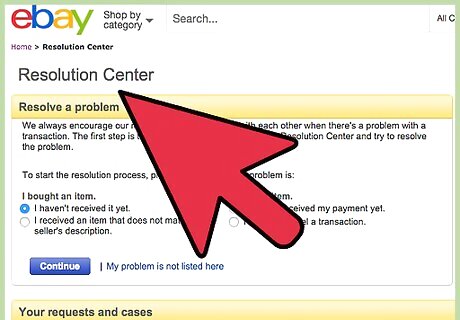
Open a case at eBay's Resolution Center. eBay provides a service to mediate between you and the other user and investigate or resolve any complaints. For example, if you bought an item and didn't receive it, you can use the Resolution Center to let eBay know. An eBay customer service representative will contact the seller for you and attempt to resolve the matter. If the issue you've encountered isn't described by any of the limited options available for you to open a case at the Resolution Center, you can contact eBay customer support directly and discuss your problem with a representative.
Reporting to Local Law Enforcement
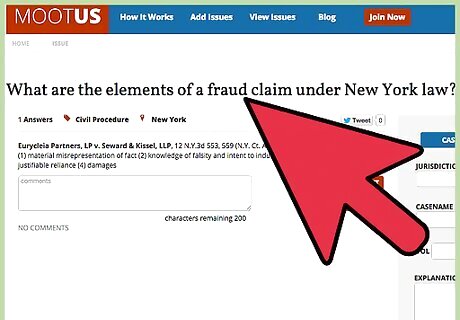
Research your state's law. Since police only investigate complaints that violate state law, studying the elements of criminal fraud in your state can help you figure out what information you need to file a complete report. Although the specific requirements and wording vary among states, criminal fraud typically includes the same basic elements. Generally, the person must misrepresent an important fact knowing that what they're saying is false, with the intent to deceive you into giving them money or property. Also keep in mind that you must have suffered some actual loss to be a victim of fraud. If you see a listing and recognize it as fraudulent, you can still report it – but the person typically can't be found guilty of fraud unless someone has actually fallen for their scam. However, they possibly could be prosecuted for attempted fraud.
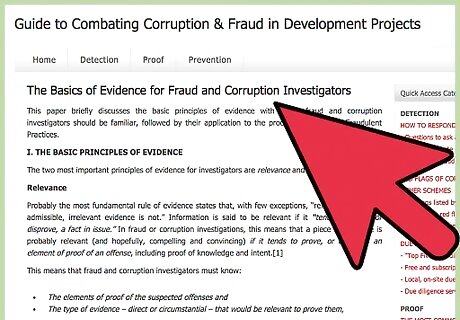
Gather information about the incident. You will need information about the other user and details about the transaction so the police are able to conduct an investigation. Using your knowledge from your legal research, focus on any documents or statements from the user that might indicate a criminal intent to defraud you. Keep in mind you're probably not going to find anything that proves the person knew the things they were telling you were false. You don't need to do any extensive detective work – rather, you should leave this work up to the police. Just focus on making sure you get the details about the transaction down along with any correspondence you've had with the user.
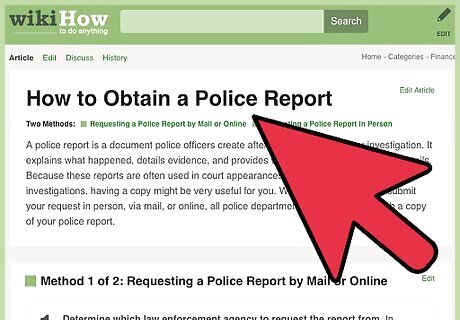
File your report with the police department. Once you have all your information together, call or stop by the nearest police precinct to submit your report. Keep in mind that typically the police in the town and state where the perpetrator is located will be primarily responsible for investigating the activity. However, if you submit your report to your local authorities they will be able to transfer information if necessary. Some police departments have online forms you can fill out to submit a report. You can find the appropriate contact information for your local law enforcement agency by visiting http://www.usacops.com. In your report, include a detailed chronological description of the events that took place. If you can reconstruct a timeline from the day you first encountered the listing until the moment you realized you were a victim of fraud, this can be helpful to the police as they investigate your report. When you file your report, ask for a reference number and a copy of the official report for your records. You may need them to add support to other reports or complaints you file.
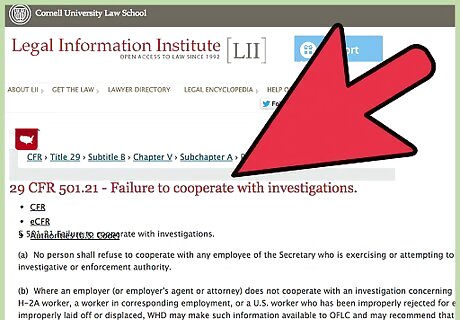
Cooperate with any further investigation. As the police investigate the activity, you may be contacted for additional information. Additionally, if you have the reference number for your case, you can call the police department to check on its status. Police have discretion on whether to pursue claims, and how long to pursue them. If losses are minimal and the police have very little information to go on, they may opt not to extend the investigation.
Reporting to the FBI
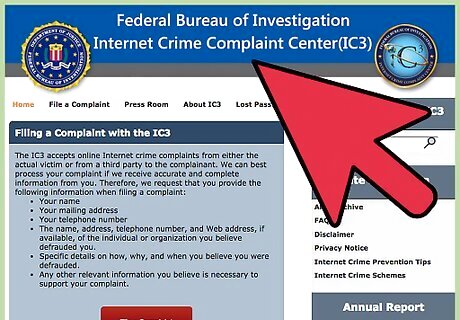
Visit the Internet Crime Complaint Center (IC3). The FBI operates a website where you can learn about internet fraud and file a complaint reporting fraudulent activity. The IC3 works to combat fraud and make it safer for people to buy and sell items over the internet. A number of business partners, including eBay and PayPal, strengthen the operation by providing information and assistance to the FBI's investigation of internet fraud. All sorts of internet crime including fraud are investigated by the IC3. Complaints are reviewed and passed along to any other federal, state, or local agencies that might have an interest in the subject of the complaint.
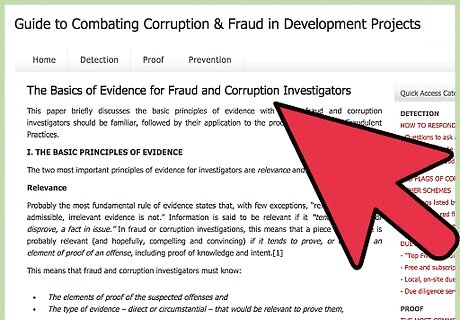
Gather information about the fraudulent transaction. Review the information required for a complaint and pull together as many details as you have. The IC3 complaint requires your name and contact information, as well as the name and contact information of the individual you believe defrauded you. Your complaint also should include a detailed description of the transaction and any other information you believe is relevant to your case. In addition to any emails, you also should retain any receipts, phone bills, or bank statements that contain information related to the fraudulent transaction.
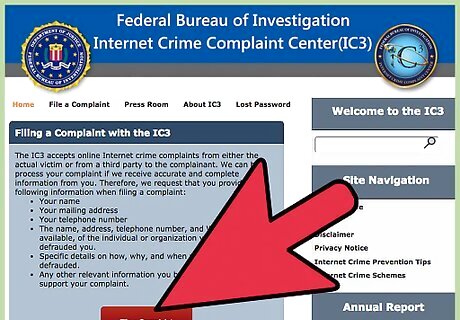
Click the button to file your complaint. Once you have all the documents and details you need, you're ready to start the complaint process. After you click the button, you'll have to read the FBI's privacy policy and accept its terms before continuing. By the act of submitting your complaint, you acknowledge that the information you've provided is correct to the best of your knowledge. If you lie in your complaint, you risk being convicted and facing fines or jail time under federal law.
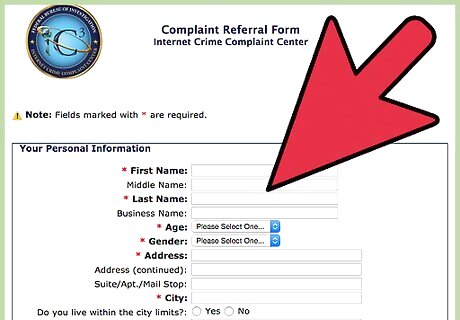
Enter information about the incident. The complaint form will have space for you to enter as much detail as possible about the fraudulent eBay listing. Before you describe the transaction, you'll be asked for information about yourself, including contact information and the name of your local police or sheriff's office. You also will be asked information about the individual or business responsible for the fraud. Although you may not have enough information to fill in all the blanks on the form, you should provide as much information as you have. The complaint form also includes a monetary loss section in which you should specify the total amount of money you lost as a result of the fraudulent transaction and characterize your means of payment. The next section of the form provides a blank for you to include a description of the transaction in your own words. You should be as specific as you can and include as many details as possible including the dates any key events took place. You may attach electronic copies of documents such as emails with the other eBay user to your complaint, but you should maintain copies in your own records as well. If a law enforcement agency opens a full-scale investigation in the future they may request this information directly from you. If you attach electronic copies of emails, make sure they include the email header information as law enforcement agencies may be able to use that information to trace the location of the sender or receiver of the email.
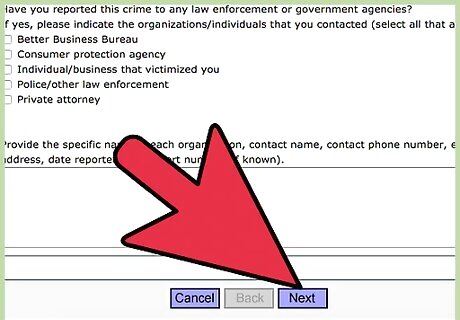
Submit your complaint to the IC3. Once you're satisfied that all the information you've entered is complete and accurate, you can submit your complaint. After you've submitted your complaint, you'll receive a confirmation email from the IC3 that acknowledges your complaint has been received and provides you with a unique complaint ID and password. The confirmation email also contains a link where you can review your complaint and download or print a PDF copy of it for your records, as well as add any further information.
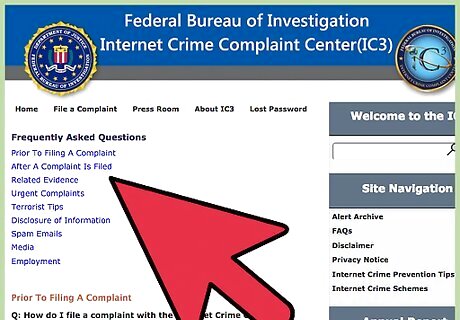
Follow up on the status of your complaint. You can use your complaint ID and password to check on the review process or report additional information related to the same complaint. Although the IC3 does not itself conduct investigations, it reviews each complaint and forwards it to the appropriate federal, state, or local law enforcement and regulatory agencies.
Reporting to the U.S. Postal Service
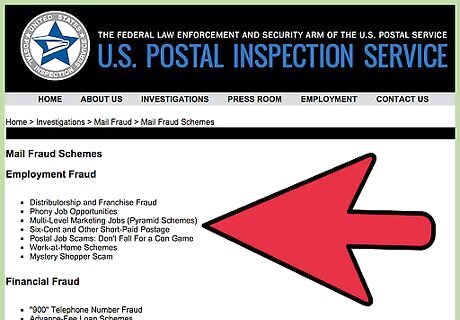
Learn about types of mail fraud. If the auction or sale proceeded to the point that the U.S. postal service was involved, the perpetrator could be guilty of mail fraud. For example, a dishonest seller may have pocketed your money and not sent the item you purchased, or used fake user accounts to bid on their own merchandise and drive up the price. If you mailed a payment and received no product in return, or if you received something in the mail that didn't match the description on the listing, the activity may constitute mail fraud.

Gather information about the transaction. Understanding the elements of mail fraud enables you to choose important and relevant information to include in your report. You should focus in particular on the involvement of the U.S. Postal Service. If the postal service was not involved in the transaction, mail fraud probably did not occur. However, if you paid for shipping and did not receive the product, the postal service is involved – even if indirectly.
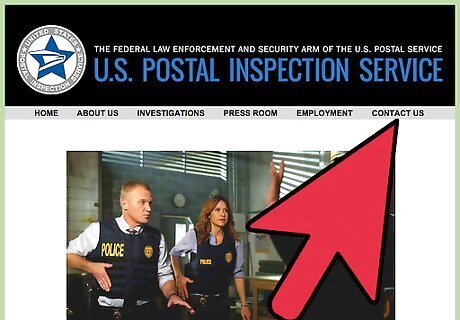
Contact the Postal Inspection Service. The Postal Inspection Service investigates reports of mail fraud from individuals. If you want to report mail fraud, you can contact the Postal Inspection Service by calling 1-877-876-2455. Option "4" allows you to report suspected mail fraud. You also can mail a letter or report to Criminal Investigations Service Center, ATTN: Mail Fraud, 222 S Riverside PLZ STE 1250, Chicago, IL 60606-6100.
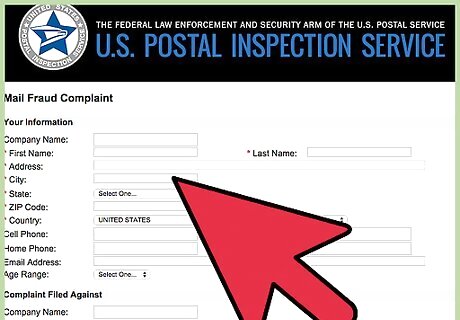
Complete your mail fraud complaint. You can submit a written complaint online, or draft a letter with a description of the incident and relevant information. The Postal Inspection Service provides a complaint form at https://ehome.uspis.gov/fcsexternal/default.aspx that you can fill out and submit. You must include your name and contact information – you cannot submit a mail fraud complaint anonymously.
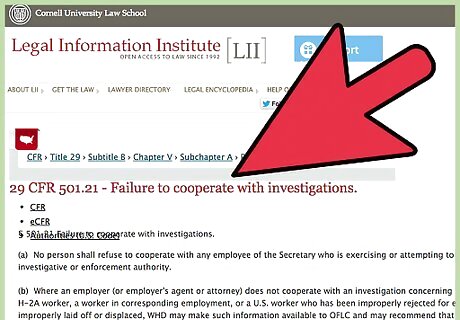
Cooperate with any further investigation. Once your report is received, a postal inspector may contact you for additional information. Since you cannot attach any documents to your online complaint, you should retain any receipts or documentation that may provide evidence for postal inspectors investigating your complaint.
Filing a Complaint with the Federal Trade Commission
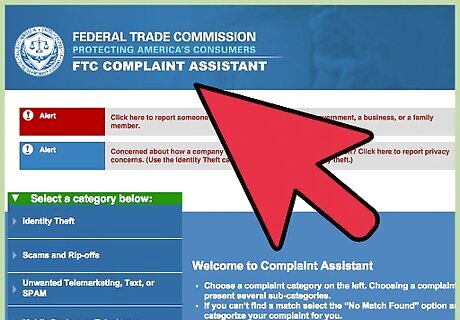
Visit the website for the FTC Complaint Assistant. The FTC maintains a website that enables you to easily file a complaint about online auction fraud. You also can file a complaint by calling 1-877-FTC-HELP. Although the FTC does not resolve individual complaints, it does have tips on recovering your money. Additionally, complaints are entered in the FTC's online database, which is used by federal, state, and local law enforcement and regulatory agencies nationwide to uncover patterns of fraud and connect past incidents to open investigations of fraudulent activity.
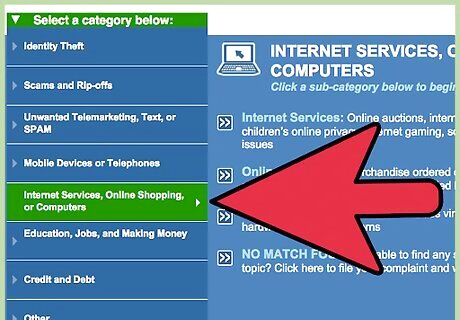
Select the appropriate category. You should choose the category for internet services to begin the complaint process. The internet services category includes online auctions, but if there were other aspects to the fraudulent transaction such as the theft of your debit or credit card number, you may wish to choose a different category that more appropriately represents your situation.
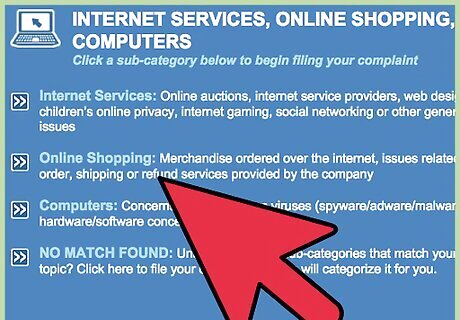
Choose a sub-category. Each category includes a number of sub-categories you can use to further define your complaint, or you can select the "no match found" option. If you initially chose the category for "internet services, online shopping, or computers," you'll find a sub-category that specifically lists online auctions.
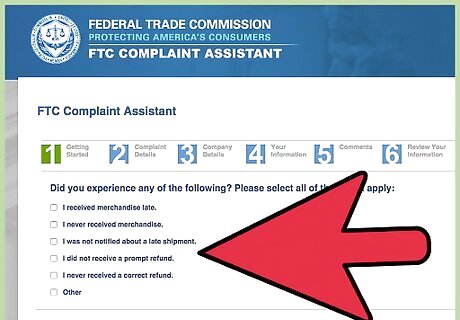
Enter details about the fraudulent activity. To begin your complaint, type a summary of the listing or the transaction, including the reasons you believe it was fraudulent. The Complaint Assistant will ask specific details about how much money you were asked to pay, how you paid, how you were contacted and when, and other information. You only have to fill in responses for any information that actually applies to your case. After you complete the specifics, you will be given the opportunity to explain the incident in your own words. You should make sure your description doesn't include any sensitive information such as your Social Security or driver's license number.
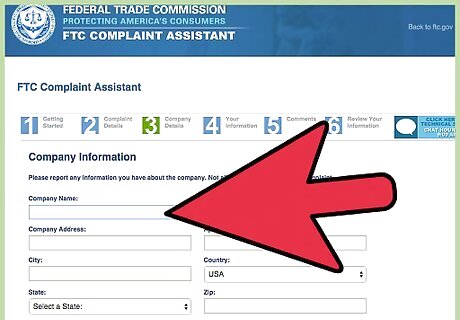
Enter information about the company or individual that perpetrated the fraud. Although you may not have correct legal names or email addresses for the buyer or seller, include whatever identifying information you were provided. If you don't have information such as a company phone number, you can simply leave that line blank. Only include the information you were given. If the user was an individual rather than a company, use the information you have for the individual including any email address or their eBay user name, if applicable.
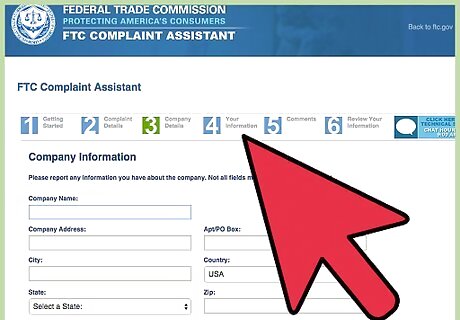
Enter your own identification and contact information. Although you have the option of remaining anonymous, if you don't enter your name and contact information you won't be able to follow up with your complaint. Additionally, the FTC or other agencies will be unable to contact you if further information is needed to investigate the fraud. The FTC includes a link to its privacy policy, which you can review before you decide how much personal information to provide.
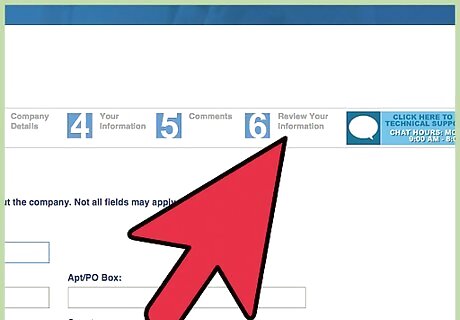
Review your complaint. The FTC allows you to review the information you've submitted for completeness and accuracy before you submit it. If you want to change an answer to any of the questions or add more information, you can go back and do so. Once you're satisfied with your answers, you have the option of printing a copy of the complaint for your records before you submit it.
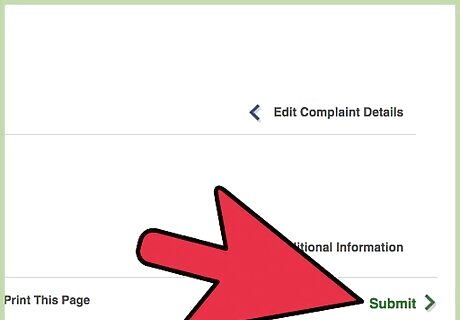
Submit your complaint. Once you submit your complaint, the FTC will review it and include the information you provided in electronic databases that are available to federal, state, and local law enforcement. Your complaint will be available on the FTC's Consumer Sentinel Network, a database of millions of consumer complaints that is available free of charge to federal, state, and local law enforcement agencies, as well as some international agencies.



















Comments
0 comment